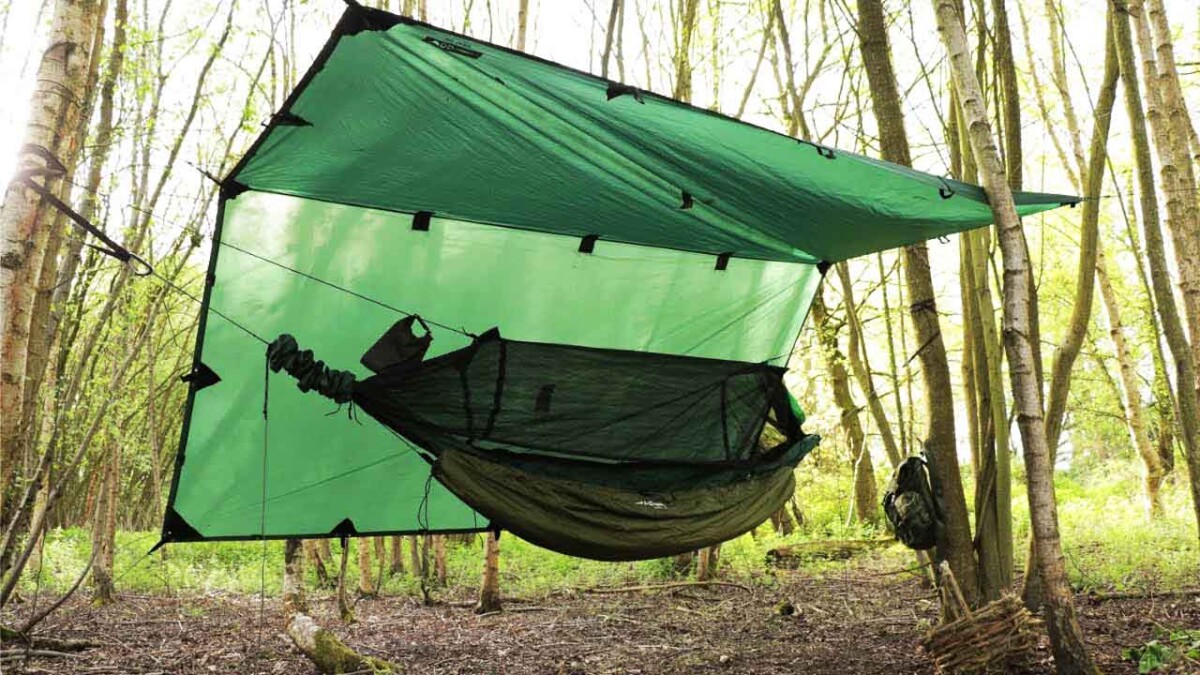All across the world, hammock camping is becoming more and more popular with both ordinary people and outdoor adventure seekers. The appeal of only having to pack a hammock and tarp instead of a full tent and also being able to sleep above the wet and uneven ground has no doubt contributed to this popularity.
But before you can go out on your own adventure, it’s important that you put together a hammock camping checklist and know what to look for in each item in that list.
Here is a list of what you should have in your hammock backpacking gear list and the qualities to look for in each one:
THE HAMMOCK
You can’t go hammock camping without a hammock in the first place, right? Nonetheless, not all hammocks are created issue. Just as you want to pay special attention to specs and features as you would when buying something big such as a car, so you will want to do with your hammock.
While the specific hammock that you buy should vary depending on what you plan to do with it, there are certain features that you should look for regardless. For example, the ideal length for a hammock is at least eight feet, with a width of at least four to five feet.
The weight capacity of your hammock is also critical. The weight limits of hammocks vary significantly, with some having a limit as low as one hundred fifty pounds and others as high as five hundred. Obviously the weight capacity of your selected hammock should be based on your personal weight and anything else that you plan on sleeping with (pillows, sleeping bag, etc).
An additional feature to look for in a hammock is its insulation. The majority of hammocks sold on the market today for summer utilize a lightweight nylon that is highly breathable so you can be kept cool in the warm temperatures. For fall or winter hammock camping you’ll need to buy additional accessories to keep you warm, such as an under quilt or a top quilt.
Whatever you do, avoid hammocks that use cotton. While cotton is warm, it also has terrible moisture wicking properties and will be very slow to dry once it gets wet.
HAMMOCK STRAPS
Setting up a hammock will require you to buy some sort of a suspension system in order to keep the hammock up off of the ground. Hammock straps will be either sold with the hammock or separately as an accessory; it’s important that you find out what the case is for your particular because the last thing you want is for you to get out there only to find that you don’t have the straps!
Regardless of whether the straps come with your hammock or are sold separately, the best kind to look for will be webbing straps with a width of at least three-quarters of an inch. While nylon ropes are also commonly sold as a suspension system for a hammock, the truth is that they can be excessively stretchy and cause you to sink too far to the ground. Thus, thick webbing straps will be your most secure option.
In addition, look for a hammock that has multiple points for attaching straps. This will give you the maximum flexibility and adjustability you need when setting up your hammock with trees that are either close or far apart.
TARP
The tarp is not something that you want to skip when assembling your hammock gear. There are many reasons to bring a tarp with you: it offers you a personal place of privacy for changing, and it also gives you added protection against the outside elements, especially wind and rain. But as with the hammocks themselves, not all tarps are created equal, and it’s important that you know what to look for.
Something that should be obvious is that a larger tarp is going to provide you with more coverage, but it’s also going to take up more space and add weight in your backpack. It’s also important to know that while there are specific tarp models designed for hammocks, virtually any kind of tarp will give you the coverage and protection that you need.
A major advantage to using a large tarp is that they have more tying locations that give you greater flexibility when setting it up over your hammock. You’ll also receive extra protection from moisture and the wind. At the same time, large hammocks may require additional tools in order to set up, such as stakes. A smaller or mid-sized carp should work well for you in the summer time where the elements are less likely to be a problem.
Regardless of which exact tarp you do select, it should extend at least one foot over both ends of your hammock to give you the best protection.
HAMMOCK UNDER QUILT
The hammock under quilt is an accessory that you will want to add onto your hammock when camping in the cold months. It is designed to keep your backside warm while you would use an over quilt to do the same for your front side.
Contrary to what many campers do, your under quilt needs to be attached to underneath your hammock rather than inside of it. The reason why is because the weight of your body would compress its insulation and thus diminish its efficiency.
Qualities to look for in an under quilt for your hammock include a stuff sack to store it in, n overall length that is slightly greater than your hammock, and proper moisture wicking properties.
BUG NET
A bug net is something that you should consider installing on your hammock during the summertime where mosquitoes and flies can be a nuisance.
The most important thing to do when purchasing a bug net is to buy one that covers the whole hammock and ideally wraps around it in order to prevent the possibility of any pests entering. Additional features to look for are to make sure the net is compatible with your hammock and a built-in compression stuff sack for storing and transporting.
CONCLUSION
All in all, these are the items you need to complete your hammock camping gear list. Hammock camping is an extremely fun activity thanks to the ease of transporting your hammock and setting it up and the fact that you get to sleep over the ground. But it’s also important that you know what to look for in your hammock gear, and this article has told you exactly what you need to consider.
Recent Posts
So 2020 was a rough year. We saw massive hurricanes, including one spot in the Gulf Coast that was stuck by two different hurricanes mere days from one another. We also witnessed one of the...
When many people get into prepping, they commonly focus on fantasies about the end of the world and building a bug-out bag to help prepare them. But the truth is these scenarios only come...

